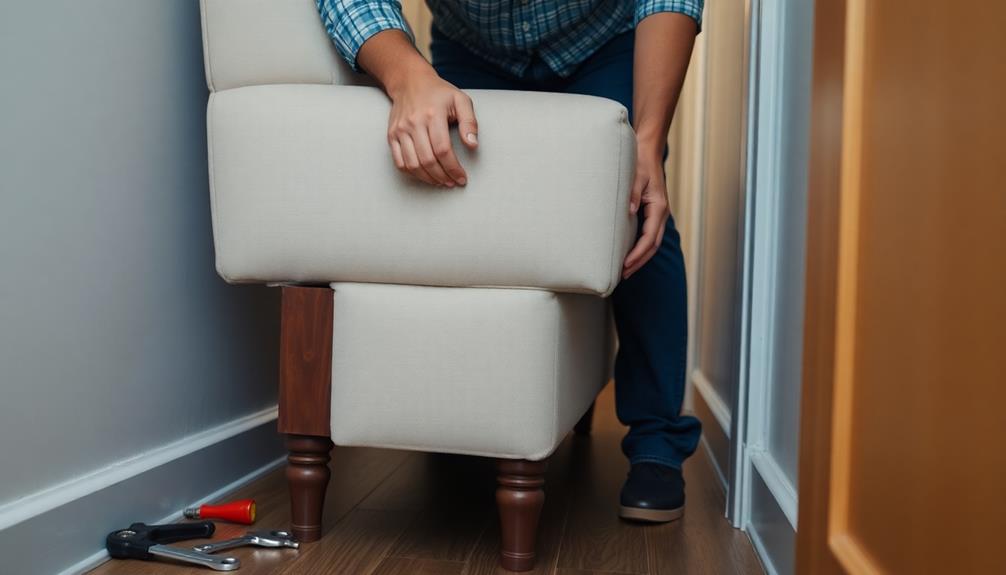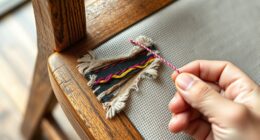To master Angular for seamless Single-Spa development, start by understanding Single Page Applications (SPAs) and their modular design. Use Angular CLI to set up your projects efficiently, keeping components and services well-organized. Manage dependencies carefully to prevent compatibility issues and implement lazy loading to boost performance. Focus on integrating microfrontends with effective communication through a global event bus. Guarantee smooth routing by setting up a central router for your application. Prioritize quality with thorough testing strategies and follow deployment best practices for peak performance. Keep exploring to release more techniques and tips for your Angular journey!
Key Takeaways
- Utilize Angular CLI for efficient project setup and organization, ensuring a clean foundation for Single-Spa applications.
- Implement a global event bus for effective communication between microfrontends, enhancing modular interactions.
- Configure routing through a central router while allowing each microfrontend to manage its internal navigation seamlessly.
- Optimize performance with lazy loading of modules and minimize shared dependencies to improve bundle sizes.
- Incorporate a comprehensive testing strategy, including unit, integration, and end-to-end tests, to ensure quality across microfrontends.
Understanding Single Page Applications

When you grasp the concept of Single Page Applications (SPAs), you'll see how they enhance user experience by loading content dynamically without requiring full page refreshes. SPAs allow users to interact with the app seamlessly, making it feel more fluid and responsive.
By breaking applications into smaller, independent modules, you can manage and maintain them more easily. Each microfrontend within an SPA retains its own dependencies and codebase, promoting isolation. This modularity simplifies updates and enhances collaboration.
A global event bus facilitates communication between microfrontends, allowing for efficient data sharing. Additionally, access to a shared configuration object helps maintain consistency across the application, ensuring a cohesive user experience.
Embracing SPAs will transform how you approach web development.
Setting Up Angular Projects

Setting up an Angular project is essential for a successful Single-Spa development experience. Begin by using the Angular CLI, which simplifies project generation. Run 'ng new your-project-name' to create your application structure, including directories like src, assets, and app.
Organizing your code logically is vital for maintainability, so keep your components, services, and modules clearly structured.
Next, configure your project for Single-Spa integration. This involves updating the Angular configuration files to allow for microfrontend architecture.
It's also important to identify any required dependencies, which you can manage with npm or yarn. By establishing a clean foundation and proper initial settings, you set yourself up for a smooth development journey in building modular applications.
Managing Dependencies Effectively

Managing dependencies effectively is essential for guaranteeing a smooth Single-Spa development process. Start by identifying necessary packages and keeping track of versions to avoid compatibility issues.
Regularly consult documentation to verify your dependencies are up-to-date and compatible with your Angular project. Aim to minimize shared dependencies to reduce duplication and enhance resource efficiency across microfrontends.
Implement lazy loading for modules and improve your bundle sizes to enhance performance. Don't forget to monitor performance metrics consistently; this will help you identify bottlenecks and maintain a superior user experience.
Integrating Microfrontends Seamlessly

Integrating microfrontends seamlessly into your Angular project is essential to achieving a cohesive user experience.
Start by ensuring each microfrontend maintains its own dependencies while still communicating effectively. Utilize a global event bus for event emission and subscription, enabling smooth interaction among the microfrontends.
It's also vital to implement a shared configuration object, which helps with consistent state sharing and collaboration across the application. Establish clear communication protocols, like custom events or state management libraries, to facilitate data exchange.
While you focus on integration, keep performance in mind; lazy loading and minimizing bundle sizes will enhance responsiveness.
Routing in Single-Spa Applications

Effective routing is essential in Single-Spa applications to guarantee smooth navigation and a seamless user experience. You'll manage the routing through a central router in the shell application while each microfrontend handles its own router configuration. This setup allows for more flexibility but increases complexity, especially as you add more microfrontends.
Here's a quick overview of routing responsibilities:
| Router Type | Responsibility |
|---|---|
| Shell Router | Manages overall application navigation |
| Microfrontend Router | Handles internal navigation for each module |
| Route Configuration | Defines specific paths for each microfrontend |
| State Management | Shares state between microfrontends |
| Event Emission | Facilitates communication during routing |
Testing Strategies for Quality

Testing strategies play an essential role in ensuring the quality and reliability of Single-Spa applications. To achieve this, you should implement a mix of unit, integration, and end-to-end testing.
Start with unit tests to validate individual components, ensuring they function correctly in isolation. Next, use integration tests to check how these components interact, focusing on shared functionalities between microfrontends.
Finally, end-to-end tests simulate user interactions within the entire application, confirming that everything works together seamlessly. Utilizing tools like Jasmine for unit testing and Protractor for end-to-end testing can streamline this process.
Remember to incorporate testing into your CI/CD pipeline, allowing for automated tests to catch issues early and maintain high-quality standards throughout your development lifecycle.
Deployment Best Practices

When deploying your Single-Spa application, it's crucial to follow best practices that guarantee a smooth rollout and ideal performance.
Here are some key strategies to take into account:
- Version Control: Always use versioning for your microfrontends to ensure compatibility and easy rollback if needed.
- Optimize Assets: Minimize and compress assets to reduce load times and enhance performance.
- Environment Configuration: Maintain separate configurations for development, staging, and production environments to avoid accidental mishaps.
- Monitor Post-Deployment: Use monitoring tools to track performance metrics and user feedback after deployment, allowing you to address issues quickly.
Frequently Asked Questions
What Are the Advantages of Using Microfrontends Over Traditional Monolithic Applications?
Microfrontends let you break applications into manageable pieces, improving scalability and maintainability. You can update parts independently, enhance team collaboration, and boost user experience by optimizing performance and reducing deployment risks compared to monolithic applications.
How Do I Choose the Right State Management Library for My Microfrontends?
Choosing the right state management library for your microfrontends seems easy, right? But you'll want to contemplate scalability, ease of integration, and community support. Test a few options to find your perfect fit. Don’t rush the decision, as the state management library you select will have long-term implications on your project’s maintainability and developer experience. Look for libraries that not only meet your current requirements but can also adapt to future needs, much like how a well-designed Nest Thermostat Home Assistant integration seamlessly evolves with smart home ecosystems. Ultimately, collaboration with your team and exploring the documentation for each option can make all the difference in finding a solution that fits like a glove.
Can Microfrontends Be Built Using Different Frameworks or Libraries?
Yes, you can build microfrontends using different frameworks or libraries. Each microfrontend can be developed independently, allowing you to leverage various technologies while ensuring they communicate effectively within your application's ecosystem.
How Can I Optimize Loading Times for My Microfrontend Applications?
To optimize loading times for your microfrontend applications, you should implement lazy loading, minimize bundle sizes, use efficient caching strategies, and monitor performance metrics regularly to identify and address potential bottlenecks effectively.
What Are Common Pitfalls to Avoid When Implementing Single-Spa With Angular?
Fifty percent of users abandon apps if loading takes more than three seconds. To avoid pitfalls when implementing Single-Spa with Angular, guarantee proper dependency management, maintain clear communication, and thoroughly test each microfrontend for integration issues.
Conclusion
By mastering Angular for Single-Spa development, you're not just building applications; you're creating seamless user experiences that flow like water, effortlessly steering through dynamic content. With the power of microfrontends, you'll transform complex systems into manageable, independent modules, much like a symphony where each instrument plays its part. As you implement best practices in testing and deployment, you'll guarantee your application performs at its peak, harmonizing efficiency with user satisfaction. Immerse yourself and embrace the journey!








